Curated by Nima Bahrehmand
Art can be a liberating alternative. It is especially a haven to reflect on how we are in the world, and what we imagine to be real and true. What is special about art is also the fact that the artist is free to develop his ideas without being hampered by rigorous scientific methods or academic dogma; it can create a space in which the artists’ concerns are being reflected through other registers: a creative play with images, settings, stories, facts and styles.
This collection is selected freely among artworks with aesthetics of art production and various strategies which artist incorporate in practice of making of videos as a flexible medium and with a focus on their challenge along the way. Metaassemblage puts together various works from video performance to re-enactment and from found footage to technological re-rendering of images. Having their departure points often in contrast with each other, artists contributing to Metaassemblage use their visual inspirations and delicate techniques wisely escape from the frames would box them in, by offering channels to communicate their socio-political / aesthetic visual questions openly.
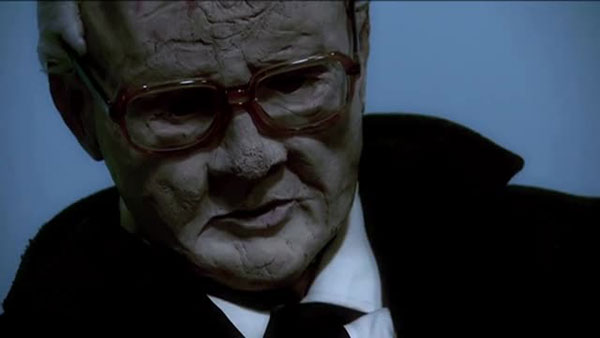
BRING US TO OURSELVES, MIKHAIL, 2009 → MP4 / 16’34” / 16:9
Emmanuel Van der Auwera (Belgium)
In an airport somewhere, a puppet of Mikhail Gorbatchev gives a monologue in the dark, gripped by the threat of the catastrophe erupting outside. Powerless and unable to react, he awaits the creeping collapse of his world.
« Bring us to ourselves, Mikhail is a video-essay , somewhere in-between a fiction-documentary and a filmed puppet-show .
At the origin of this project is a Louis Vuitton promotional photograph showing Mikhail Gorbatchev in a black limousine passing by the Berlin Wall. Literally derived from the text of the advertisement which presents the imaginary scene of Gorbatchev coming back from an historically important conference, the story freezes the exact moment when the picture was captured, and brings it to a parallel scenario enabling to reflect on the relationships between History, tragedy, representation and subjectivity through the animation of a full size Gorbatchev puppet by two professionals puppeteers.
The Russian voice-over, (with English or French subtitles), articulates the pieces of a fictitious conference, built from authentic texts written or read by Gorbatchev.
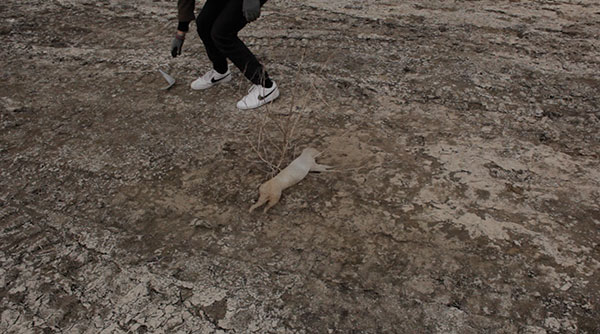
“Suspension of Disbelief” 2013 → MP4 / 14’21” / 16:9
Kipras Dubauskas (Lithuania)
The work shows contemporary interpretation of ancient mythology based on the Greek god Hermes. The main protagonist walks throughout neglected urban territories that will soon undergo gentrification. Do these myth-inspired wanderings articulating a socio-political message? Or it’s rather the testimony of such irreversible alterations?
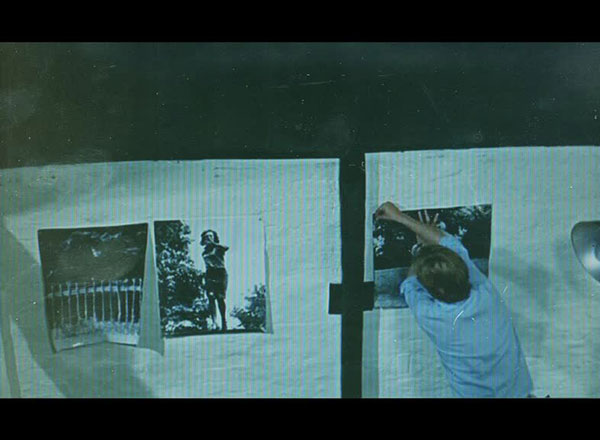
“Somebody was trying to kill somebody else” 2014
Benjamin Verhoeven (Belgium)
“Somebody was trying to kill somebody else” is a part of an ongoing project called ‘Scanning Cinema’. The project consists of scanning moving images and putting them back into an animated film. The inversions that the artist makes in his production method (the physical action of scanning) are generating a new language like a disturbed echo from the photographic reviving of moving images.
By scanning the movie, the image is wrapped into a single frame that shows the time and duration of moving images into a film. The outcome is an total different way of looking at film. Because it goes through the filter/ capturing/ translation of the scanner, important elements of cinema are being disrupted.
The work also is not only dealing with the relation between digital and analog image but also with the single frame and time within a movie.
Within this research the artist invested in mapping out connections between different visual technologies. There is a both retro- and futuristic felt about this animated assemblages, where different machines are repurposed and fitted into a copy, distort magnify or obliterate each other’s output.
The artist tries to open new perspectives on moving images through the combination of deconstruction and montage and by stretching the cracks within the movement of an image and time.
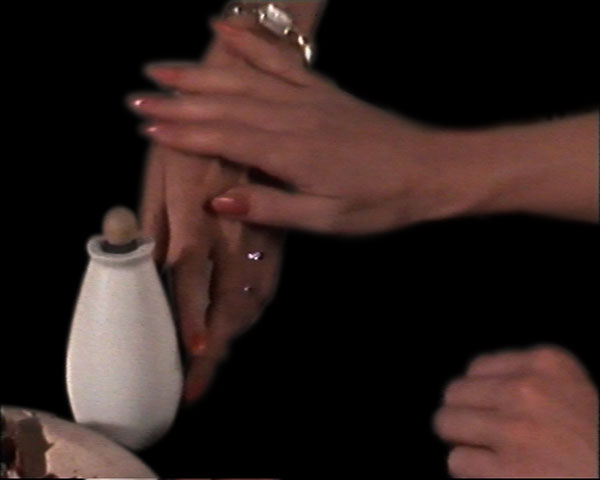
PUT YOUR LOVING HAND OUT (First Edit), 2009 → MP4 / 04’30”
Loukia Alavanou (Greece)
The work was commissioned by Common View: Contemporary art at the National Theatre, Athens. The video was initially screened for three months at the stage of the Greek national theatre, before the play started every night (Alexander Ostrovsky’s Diary of a Scoundrel). The length of the animation and the way it was presented followed the tradition of early 20’Th century cartoon shorts that were presented in theatre audiences before the feature started. A second version of the video was presented simultaneously in The Message at Art Park Program, Art Dubai, organized by Bidoun Magazine.
Put Your Loving Hand Out is an assemblage of cinematic male and female hands that never touch. Images of “stages” and theatrical props are used as backgrounds, in front of which those hands “act out” un-marriage, violence or false attempts to unite. The sounds of alarms and sirens often take over the images.
I made this work while reading Renata Salecl’s essey “The silence of female jouissance” and was inspired by the relationship she draws between Lacan’s myth of the two hands and Kafka’s view of the relation between Odysseus and the Sirens in his essey “Silence of the Sirens”. Kafka’s Sirens, according to Salecl, fall mute when they fall in love with Odyseus.
Some cut-outs of hands or other body parts I used come from the following cinematic characters: Marnie from Hitchcock’s homonymous film and Madeleine from Vertigo, Fassbinder’s Petra Von Kant, the couple from Polanski’s Bitter Moon, Lady Lyndon from Kubrick’s Barry Lyndon, Paulina Escobar in Polanski’s Death and the Maiden and Rosemary in Rosemary’s Baby, Disney’s Cinderella and Laura Palmer in Lynch’s Twin Peaks.
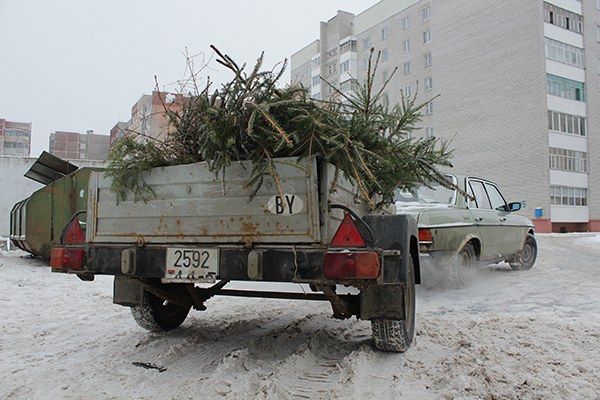
Requiem for a New Year, 2013 → MP4 / 09’11” / 16:9
Jura Shust (Belarus)
The New Year’s celebration is the most important collective ritual in the post soviet region today. This feast deriving from pagan roots blends public and private, transforming the nation into a big family.
A moment at the joint of a year cycle, triumph of the calendar, statement of daily order and basis of discipline.
As if catharsis which eases the increasing tension in society, betrays oblivion of the past and programing the future.
The Fir Tree as the main symbol of the holiday refers to the myth of the World Tree. The tree which connects paradise and underworld, piercing the dimension of life, metaphorically linking us to the parallel world or alternative reality.
By documenting the situation 10 days after the celebration the film captures the perspective of the reborn world and grieves for the victims.
